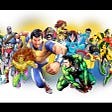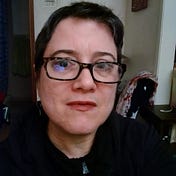Reading Joan Didion’s The White Album
You have to love Joan Didion if for no other reason than that she titled an essay, “On the Morning After the Sixties.” Didion was ornery, like a lot of writers are or try to be, and she was aware of it. But she wasn’t self-conscious about it. Didion was a great exemplar of the phrase “sorry not sorry,” although she would probably have put it less crudely.
It’s fascinating, the way that when Didion says, “the Sixties,” she means her Sixties, but how you never doubt that she’s also saying it’s the Sixties. And you get the feeling that no one ever contradicted her on that. Nor is one really surprised that “On the Morning After the Sixties” isn’t about the Sixties and isn’t even about a morning. In fact, it starts on an afternoon in the Fifties, a scene that 1970s Didion is invoking by way of explaining that she must be understood as a “child of her time.” In the scene, she’s lying on a leather couch in a fraternity house at Berkeley “on a bright autumn Saturday in 1953.” She goes on to explain that this scene is an emblem of her whole generation’s style. She writes:
We were all very personal then, sometimes relentlessly so…. I suppose I am talking about…the ambiguity of belonging to a generation distrustful of political highs, the historical irrelevancy of growing up convinced that the heart of darkness lay not in some error of social organization but in man’s own blood. If man was bound to err, then any social organization was bound to be in error. It was a premise which still seems to me accurate enough, but one which robbed us early of a certain capacity for surprise.
That airily thrown-off “we” is a great Didion hallmark, as is the disavowal of the ability to be surprised. Of course, there were, and still are, people who get highly annoyed at her for such stances and for articulating that idea about human imperfectability that classic conservatives hold so dear — not to mention presuming to speak for an entire generation. It’s true, the Didion of The White Album can be super-annoying. Elsewhere in that collection, she aims withering condescension at the concerns of second-wave feminists, acting willfully obtuse to the implications of their tenet that the personal is political, accusing them of being childish while at the same time indulging in her own romanticizing of the feminine (she even posits at one point that “what it is like to be a woman” is to have a “sense of living one’s deepest life underwater, that dark involvement with blood and birth and death…”).
So, yes, she can make a reader want to scream. But the reason to stick with her is that things matter to her. As a writer, a journalist, for all the dryness of her tone and the finely wrought elegance of her syntax, she didn’t hold herself apart. She let the “Sixties” happen to her. She didn’t sit back with a martini making arch remarks, or tsking, or even expressing outrage. She was too busy living in the fallout. Indeed, she was shocked by the violence and chaos of the Sixties, which is a side of that era that even today tends to get overlooked in favor of gauzy portrayals of the time as innocent and idealistic. You could say that she came by that shock honestly; the Sixties had actually coursed through her house in Hollywood, the crumbling mansion she and her husband rented on Franklin Street, through which passed many of the cultural luminaries of the day — as well, if we are to believe “The White Album,” plenty of less luminous, or just downright lost, people. Didion, famously, absorbed the Sixties to the point that they gave her a nervous breakdown. “An attack of vertigo and nausea,” she writes, “does not now seem to me an inappropriate response to the summer of 1968.”
That line may be an example of what Didion explained was her “theatrical temperament.” Indeed, her pronouncements can sound melodramatic — sometimes precisely because they are so terse. Another example: “We tell ourselves stories in order to live,” the oft-quoted first sentence of the title essay in The White Album. It’s also a line that can mean almost anything you need it to. “We look for the sermon in the suicide, for the social or moral lesson in the murder of five,” she says later in the paragraph, making it clear that she means the sort of stories journalists write to help the public understand how to process traumatic events. And there’s no question that she means that those stories are inadequate. Yet the line can also be read with a different, less ironic emphasis. “We tell stories because we have to — because that’s the only choice we have if we want to live at all” could be another meaning, and indeed it’s the meaning that Didion did embody throughout her life and work. Memoir, for her, was a genre of investigation no less than journalism was. Memoir was a reckoning. She wrote essays and books to ask what, and how, and why. Even if she thought she had no answers in the end, still the asking — and the shaping of the asking — was itself the answer.
Didion broke down many binaries. She was at once an insider and an outsider; as she says in the title essay of The White Album, “I had the keys but not the key.” She opened her home to the people at the heart of the Sixties zeitgeist, but she didn’t always know who they were, “did not always know who was sleeping in every bed.” Her press credentials admitted her to Huey Newton’s inner chamber and to a recording session of The Doors, but while she took down the things they said, she admitted she didn’t always get the gist. Still, she recorded it meticulously, honestly, always letting the reader know whom they were listening to, whose filter the facts were coming through. In this, she was one of the purest practitioners of what came to be called the New Journalism.
She broke another binary in the way that she could be ironic and sincere at once. In a piece like “On the Morning After the Sixties,” she’s affecting a pose in presuming to speak for everybody, but at the same time, it’s clear that there’s something she earnestly wants to figure out. At the end of the essay, it’s moving when she says that she and her fellow 1950s Berkeley graduates “remain the survivors of a peculiar and inward time.” She says that if she “could believe that going to a barricade would affect man’s fate in the slightest,” she would go to that barricade, and she often wishes she could. But in the end, she says, “it would be less than honest to say that I expect to happen upon such a happy ending.”
We honor the barricade-goers, the speech-givers, those who stand at the front of the crowd and inspire. But we must honor the inward-turners as well. In the end — and perhaps this is most significant for women writers, artists, thinkers — one of the most important binaries that Didion broke is the one between “weak” and “strong.” How could it be otherwise for a writer who counted both Hemingway and Henry James, those polar opposites in both literary and psychological style, as models? Didion, with her open admission of her own fragility — her migraines, her nervous breakdown, even her inability to buy a watch — broke the rules about how to be “strong.” The persona she made for herself confessed to being often frightened, bewildered, sad, or just aghast. But the prose itself was always both controlled and searching.
That tension between style and content is what makes Didion so moving to read. But she is bracing as well. Long may her example live, an example at once so sly and so encouraging to those of us who have ever worried that we fall short of some “badass” ideal. Joan Didion was like us — soft-spoken, nuanced, striving for precision — and all the time there was never any doubt of her mightiness, both on the page and off.




